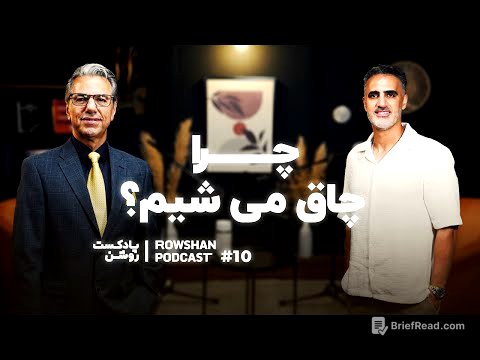TLDR;
This video provides a comprehensive overview of wave motion, covering various types of waves, their equations, and properties. It also discusses superposition, reflection, standing waves, and specific applications like sonometers and organ pipes. The video aims to help students understand the fundamentals of wave motion and prepare for the JEE Mains exam, highlighting important formulas and concepts.
- Types of waves and their properties
- Wave equations and their applications
- Superposition, reflection, and standing waves
- Applications in sonometers and organ pipes
Introduction [0:00]
The lecture begins with a greeting to the students and an introduction to the topic of Wave Motion, which is the final chapter of the 11th-grade syllabus. The instructor notes that while the weightage of this chapter in the JEE Mains exam is relatively low, it's still important, especially considering the removal of the Doppler effect from the syllabus. The focus will be on standing wave formation, vibrations in strings and organ pipes, and power-related questions.
Topics to be covered [2:42]
The instructor outlines the approach to covering wave motion, balancing in-depth analysis with exam-oriented preparation. Key topics include progressive waves, standing waves, superposition, reflection, and beats. The lecture aims to provide a clear and comfortable understanding of wave phenomena, with a brief mention of alternating current due to its connection with electromagnetic waves.
Type of waves [5:41]
The lecture starts with the basic fundamentals of waves, classifying them based on the requirement of a medium for propagation. Mechanical waves require a medium, while non-mechanical waves do not. Mechanical waves involve the transfer of disturbance through a medium, not the actual transfer of the medium itself. Waves are classified as one-dimensional (e.g., waves on a string), two-dimensional (e.g., water waves), or three-dimensional (e.g., sound waves, light waves), depending on the direction of propagation. Waves are further classified as transverse (particle motion perpendicular to wave direction) or longitudinal (particle motion parallel to wave direction).
Equation of undamped harmonic 1-D progressive wave [14:40]
The instructor transitions to writing the equation for an undamped harmonic one-dimensional progressive wave. Undamped means there is no loss of energy due to external factors. Harmonic refers to the periodic nature of the wave. The equation describes the displacement of a particle at a given position and time. The wave equation provides a way to predict the displacement of particles in the medium as the wave propagates.
Equation of sine wave [35:00]
The lecture discusses the equation of a sine wave, emphasizing its importance in the syllabus. The general form is y = A sin(ωt - kx + φ), where A is the amplitude, ω is the angular frequency, k is the angular wave number, and φ is the phase constant. The relationship between angular frequency (ω = 2πf), wave number (k = 2π/λ), and wave speed (v = fλ) are explained. The instructor also clarifies that the sign of the terms inside the sine function indicates the direction of wave propagation.
Velocity of acceleration of particle [49:06]
The lecture transitions to discussing the velocity and acceleration of a particle in a wave. The velocity of a particle is given by the derivative of its displacement with respect to time (dy/dt), while the acceleration is the second derivative (d²y/dt²). The relationship between particle velocity, wave velocity, and the slope of the wave is also derived.
Differential form of wave equation [1:00:10]
The differential form of the wave equation is introduced, relating the second partial derivative of displacement with respect to time to the second partial derivative with respect to position. This form is useful for identifying whether a given equation represents a wave. The instructor also discusses how to determine the direction of particle velocity based on the slope of the wave and the direction of wave propagation.
Speed of transverse wave [1:21:07]
The lecture transitions to discussing the speed of a transverse wave on a string, which depends on the tension (T) in the string and the linear mass density (μ). The formula is v = √(T/μ). The instructor explains the concepts of elastic and inertial properties that affect wave speed. Percentage change problems related to tension and mass density are also discussed.
Speed of sound wave [1:30:42]
The speed of a sound wave is discussed, highlighting its dependence on the bulk modulus (B) and density (ρ) of the medium. The formula is v = √(B/ρ). For gases, the formula becomes v = √(γRT/M), where γ is the adiabatic index, R is the gas constant, T is the temperature, and M is the molar mass. Newton's and Laplace's corrections to the formula are mentioned, along with typical values of γ for monoatomic, diatomic, and polyatomic gases.
Power transmitted in wave [1:48:06]
The lecture covers the power transmitted in a wave, focusing on average power. The formula for average power is P = 2π²f²A²μv, where f is the frequency, A is the amplitude, μ is the linear mass density, and v is the wave speed. The energy of one wave cycle is also discussed.
Intensity snd loudness [1:53:26]
The lecture defines intensity as power per unit area and provides the formula I = 2π²f²A²ρv, where ρ is the density of the medium. The relationship between pressure amplitude and displacement amplitude is given by p = Bka, where B is the bulk modulus and k is the wave number. The intensity from a point source and a linear source are discussed, with intensity decreasing as 1/r² and 1/r, respectively. Loudness is introduced, with the formula B' = 10 log(I/I₀), where I₀ is the threshold of hearing intensity.
Superposition of Waves [2:15:22]
The principle of superposition is explained, stating that when two or more waves overlap, the net disturbance is the sum of the individual disturbances. The instructor uses triangular and rectangular waves as examples to illustrate how to find the resultant wave pattern.
Reflection of waves [2:25:01]
The lecture discusses the reflection of waves, noting that when a wave reflects from a fixed end, its shape gets inverted. Conversely, when a wave reflects from a free end, there is no inversion. Triangular waves are used to illustrate these concepts.
Standing Waves [2:29:55]
Standing waves are formed when two or more waves of the same frequency travel in opposite directions and superimpose. Unlike traveling waves, not every particle in a standing wave has the same amplitude. Some particles (at nodes) do not move at all, while others (at antinodes) have maximum amplitude. The equation for a standing wave is derived, and the concept of oscillating amplitude is introduced.
Standing Waves formation on string [2:51:49]
The lecture discusses standing wave formation on a string fixed at both ends. The instructor explains that the string oscillates in specific patterns, forming loops.
String fixed at both ends [2:56:03]
The lecture focuses on the specifics of a string fixed at both ends, explaining that only certain frequencies can produce standing waves. The conditions for these frequencies are derived, leading to the concepts of fundamental frequency, harmonics, and overtones. The formulas for the frequencies of harmonics and overtones are presented, and the differences between them are clarified.
Sonometer Experiment [3:17:11]
The sonometer experiment is introduced, which involves a wire stretched between two bridges. The length, tension, and mass per unit length of the wire can be adjusted to study the relationship between these parameters and the frequency of the standing waves produced.
Standing waves formation in pipe [3:22:11]
The lecture transitions to discussing standing wave formation in pipes, drawing a distinction between the sound produced by a speaker and the specific frequencies created in an organ pipe.
Open Organ Pipe [3:30:52]
The lecture discusses open organ pipes, where both ends are open. The displacement and pressure variations inside the pipe are explained, and the conditions for the lowest frequency (fundamental) are derived. The formula for the frequencies of the harmonics is presented. The concept of end correction is introduced, and the effective length of the pipe is adjusted accordingly.
Resonance tube experiment [3:38:40]
The lecture briefly touches on resonance tube experiments.
Beats formation [3:47:25]
The lecture concludes with a discussion of beats, which are formed when two waves with slightly different frequencies interfere. The beat frequency is equal to the difference between the two frequencies.
Thank You Bacchon [4:36:31]
The instructor expresses gratitude to the students.









